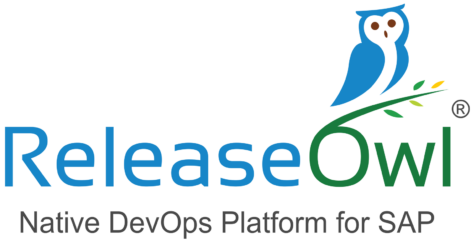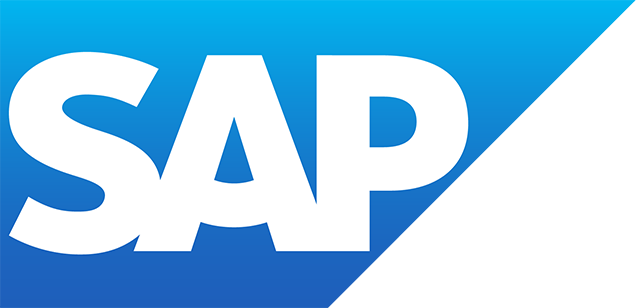SAP EAI
Filter By
Browse By
- SAP Analytics and AI
- SAP Application Development and Integration
- All SAP Application Development and Integration
- SAP ABAP
- SAP ABAP Development Tools
- SAP ABAP Test Cockpit
- SAP API Management
- SAP BAPI
- SAP Basis
- SAP BRF
- SAP Business Application Studio
- SAP CMS
- SAP Design Studio
- SAP Development Tools
- SAP DevOps
- SAP EAI
- SAP EDI
- SAP Extension Suite
- SAP Fiori
- SAP Fiori Elements
- SAP Integration Suite
- SAP Low Code Application Development
- SAP Low Code Automation
- SAP Netweaver
- SAP Release Management
- SAP UI5
- SAP Web Application Server
- SAP Web IDE
- SAP Business Process Management
- SAP Center of Excellence
- SAP CIO
- SAP Customer Experience
- SAP Data and Data Management
- All SAP Data and Data Management
- SAP BW
- SAP BW/4HANA
- SAP Crystal Reports
- SAP Data Archiving
- SAP Data Center
- SAP Data Governance
- SAP Data Integration
- SAP Data Migration
- SAP Data Quality
- SAP Data Services
- SAP Data Strategy
- SAP Data Visualization
- SAP Data Warehouse Cloud
- SAP DMS
- SAP Document Control
- SAP EIM
- SAP ETL
- SAP ETL Tools
- SAP HANA
- SAP HANA Administration
- SAP HANA Deployment Infrastructure
- SAP HANA Studio
- SAP Master Data
- SAP Master Data Governance
- SAP MDM
- SAP Enterprise Architect
- SAP Enterprise Asset Management
- SAP ERP
- SAP Finance
- All SAP Finance
- SAP Accounting
- SAP AR AP
- SAP Asset Accounting
- SAP Billing Systems
- SAP BPC
- SAP BRIM
- SAP Cash Management
- SAP Central Finance
- SAP Controlling
- SAP COPA
- SAP Cost Center Accounting
- SAP Currency Risk
- SAP e-invoicing
- SAP FICO
- SAP Finance Automation
- SAP Advanced Financial Closing
- SAP Financial Consolidation
- SAP Financial Planning
- SAP FX Risk
- SAP General Ledger
- SAP Global Tax Management
- SAP Hyperion
- SAP Order to Cash
- SAP Payment Processing
- SAP Profitability Analysis
- SAP Rebate Management
- SAP S/4HANA Finance
- SAP SWIFT Compliance
- SAP Treasury Management
- SAP Universal Journal
- SAP Governance Risk and Compliance
- SAP Human Capital Management
- SAP Intelligent Technologies
- SAP Platform and Technology
- All SAP Platform and Technology
- SAP Business Technology Platform
- SAP Cloud
- SAP Cloud Connector
- SAP Cloud Integration Platform
- SAP Cloud Migration
- SAP Cloud Platform
- SAP Cloud Providers
- SAP Cloud Strategy
- SAP Digital Signature
- SAP Container Platform
- SAP HANA Enterprise Cloud
- SAP Digital Asset Management
- SAP Smart Forms
- SAP HEC
- SAP Digital Integration Hub
- SAP Hyperscalers
- SAP Infrastructure
- SAP Messaging
- SAP Quality and Testing
- SAP Security
- SAP Spend Management
- SAP Supply Chain Management
- All SAP Supply Chain Management
- SAP APO
- SAP Asset Management
- SAP Business Network
- SAP Digital Manufacturing Cloud
- SAP Digital Twin
- SAP EWM
- SAP IBP
- SAP Inventory Management
- SAP Label Printing
- SAP Logistics
- SAP Manufacturing
- SAP Manufacturing Automation
- SAP MES
- SAP MII
- SAP MM
- SAP MRO
- SAP MRP
- SAP Order Management
- SAP Plant Maintenance
- SAP PLM
- SAP Production Planning
- SAP S&OP
- SAP SD
- SAP SPM
- SAP Supply Chain Planning
- SAP Track and Trace
- SAP Transportation Management
- SAP System Administration
SAP EAI: Challenges and Key Considerations
What Is SAP EAI?
EAI stands for enterprise application integration. SAP defines EAI as the process of connecting independently designed software applications so they work together.
SAP Process Integration (formerly known as SAP NetWeaver Process Integration) is SAP’s EAI software. SAP EAI is a component of SAP Process Integration and is used to facilitate the exchange of information between a company’s internal software systems and software systems of external parties.
Evolution of SAP EAI
EAI has evolved over the years, beginning in 1980 when companies began using technology to connect on-premise business applications.
In the 1990s, with the inception of cloud-based Software-as-a-Service (SaaS) applications, EAI technologies evolved to handle the communication and harmonization of a hybrid landscape.
Today, components like application programming interfaces (API), event-driven actions, and data mapping help link applications together.
SAP EAI Challenges
In August 2021, SAPinsider published a benchmark report, “SAP Integration Landscape.” A majority of respondents (90%) identified integrating third-party applications with SAP systems as their top integration challenge. While customers said they are leveraging existing SAP integration tools as well as technologies like electronic data interchange (EDI) to meet their integration requirements, less than 10% reported that their current integration strategy is completely meeting the organization’s needs.
In his report, Robert Holland writes: “The accelerated move to cloud-based applications over the last 18 months, combined with the increasing adoption of best-of-breed solutions, regardless of vendor, has significantly increased the complexity of these integration challenges.”
SAP EAI: Challenges and Key Considerations
What Is SAP EAI?
EAI stands for enterprise application integration. SAP defines EAI as the process of connecting independently designed software applications so they work together.
SAP Process Integration (formerly known as SAP NetWeaver Process Integration) is SAP’s EAI software. SAP EAI is a component of SAP Process Integration and is used to facilitate the exchange of information between a company’s internal software systems and software systems of external parties.
Evolution of SAP EAI
EAI has evolved over the years, beginning in 1980 when companies began using technology to connect on-premise business applications.
In the 1990s, with the inception of cloud-based Software-as-a-Service (SaaS) applications, EAI technologies evolved to handle the communication and harmonization of a hybrid landscape.
Today, components like application programming interfaces (API), event-driven actions, and data mapping help link applications together.
SAP EAI Challenges
In August 2021, SAPinsider published a benchmark report, “SAP Integration Landscape.” A majority of respondents (90%) identified integrating third-party applications with SAP systems as their top integration challenge. While customers said they are leveraging existing SAP integration tools as well as technologies like electronic data interchange (EDI) to meet their integration requirements, less than 10% reported that their current integration strategy is completely meeting the organization’s needs.
In his report, Robert Holland writes: “The accelerated move to cloud-based applications over the last 18 months, combined with the increasing adoption of best-of-breed solutions, regardless of vendor, has significantly increased the complexity of these integration challenges.”
Key Consideration for SAP EAI
Don’t consider SAP EAI in a silo. To achieve agility, business value, and innovation, SAP customers need to take advantage of technology that not only addresses application integration, but also application development, data value creation, and extensibility of SAP and third-party application and data assets. In his article, Jagdish Sahasrabudhe, CTO of SAP’s Global Partner Organization, writes: “In the current environment of rapid change, enterprises need to develop an integrated view across all apps, data, and other assets to gain insights and make real-time decisions.”
Consider the increase in Software-as-a-Service (SaaS) applications in your SAP EAI strategy. Sahasrabudhe cites a 50% increase in companies’ spend on SaaS applications in 2020 compared to 2018. This has led to management, cost, integration, and security implications. When developing an EAI strategy, factor in these complexities and understand the technologies that are available today to help, like SAP Business Technology Platform, SAP Integration Suite, and SAP Extension Suite.
Understand SAP EAI’s role in business transformation. According to SAP, this role is fundamental. EAI can help you with everything from creating meaningful customer insights to complying with e-government and regulatory requirements and powering e-commerce. And, EAI can enable benefits such as information sharing, business process optimization, and agility and efficiency.
5 results
-

Driving Innovation With Integration
Reading time: 2 mins
Panelists: Dave Suffecool, Ed Pearce, and Bill Metallo Date: June 28 Time: 12:30 PM EDT/9:30 AM EDT Duration: 60 minutes How will you meet the integration challenges of digital transformation? When embracing new processes and technology, it’s imperative to understand the impact on your current, business-critical solutions. Is your integration infrastructure ready for adoption of...…
-

- SAP EAI
 Premium
Premium
Use a Custom Adapter Module to Integrate SAP PI with the JSON Format
Reading time: 19 mins
At the moment, SAP Process Integration (SAP PI) does not support direct integration with the JavaScript Object Notation (JSON) format. Aaron Long shows how to develop a custom adapter module processor in Java to convert data between JSON and the XML format. Key Concept JavaScript Object Notation (JSON) is a lightweight data-interchange format. It is...…
-

- SAP EAI
 Premium
Premium
Making Sense of ABAP-Based Interface Technologies in the Modern IT Landscape
Reading time: 15 mins
Survey modern ABAP-based interface technologies supported by SAP NetWeaver Application Server ABAP (AS ABAP). Look at the pros and cons of each technology and identify typical usage scenarios. Develop a decision table that can be used to determine when and where to apply specific interface technologies. Key Concept In the past several years, the SAP...…
-
-

- SAP EAI
 Premium
Premium
A Checklist for Developing Your Global Template
Reading time: 14 mins
Discover the components of a global template and the advantages of implementing it across an enterprise. Key Concept A global template is a common approach and solution across geographies and markets. A global template formulates the strategy for business processes, system architecture, implementation methodology, change management, hardware, and value realization. The global template typically consists...…
-

- SAP EAI
 Premium
Premium
Event Management Offers a Real-Time Window on Your Supply Chain
Reading time: 7 mins
SAP recently introduced its Event Management application, which allows users to monitor the supply chain and react to problems when they arise. This overview of Event Management explains the features of the functionality and provides ideas for how you might use it at your site. SAP’s newly launched event management system is designed to allow...…
Become a Member
Unlimited access to thousands of resources for SAP-specific expertise that can only be found here.
Become a Partner
Access exclusive SAP insights, expert marketing strategies, and high-value services including research reports, webinars, and buyers' guides, all designed to boost your campaign ROI by up to 50% within the SAP ecosystem.
Upcoming Events
Related Vendors
Your request has been successfully sent


